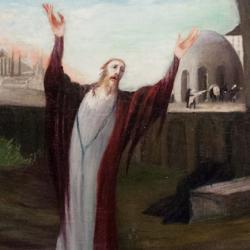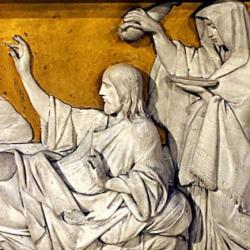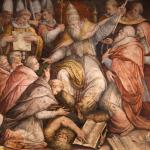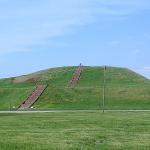In a 1997 article in NTS , Christopher Smith defends the five-discourse structure of Matthew against narrative critics who focus attention on the plot of Matthew. The problem with narrative approaches, Powell argues, is that as story Matthew doesn’t always work all that well: “it is a rather dull [story] for several long stretches, where the disciples basically sit around while Jesus talks.” If we are looking for Matthew’s arrangement of events or incidents and episodes, we’re bound to be frustrated by the gospel’s failure to present any incidents “a great deal of the time.”
This does not lead us back to redaction criticism. Rather, Powell wants to justify Bacon’s fivefold structure, and the notion that Matthew alternates narrative and discourse, on the basis of literary critical considerations:
Identification of Matthew’s discourse-concluding formula (an identification that takes, oh, 4 minutes and 37 seconds)has “basically been the extent of the application of literary-critical criteria in establishing a fivefold structure for the gospel as a whole. Interpreters following Baon have defended such a structure instead by appeal to redactional considerations such as Matthew’s presumed desire to emulate the Pentateuch in creating five ‘books,’ thus presenting the teaching of Jesus in such a way as to cast him as the ‘new Moses.’ But the text of the gospel itself provides much more literary evidence for a fivefold structure than this simple discourse-ending formula.”
What evidence? Smith suggests that all but one discourse begins as well as ends with a stylized formula, which mentions Jesus sitting, the disciples coming to Him, with a reference to the crowds. The exception is the discourse in 10:1, which covers the approach of the disciples by including Jesus’ command to the disciples to gather to Him. Chapter 13, likewise, does not begin with this formula; the disciples do not approach Him until 13:10, but that is appropriate since it initiates a “new beginning” of the discourse, now in the house with the disciples only. Based on this, Smith claims that the last discourse does not begin until chapter 24, but if the “opening formula” is broken into two verses in chapter 13, there doesn’t seem to be any reason it couldn’t be delayed to the middle of the final discourse.
Smith’s effort to show the unity of narrative and discourse is less than successful. He argues that narratives introduc the discourses, and that each narrative contains a theme that is picked up in the following discourse. Thus, for instance, the issue of Jesus’ authority comes up in chapters 8-9, and this keyword is employed at the beginning of the mission discourse in chapter 10. This seems quite arbitrary: There are numerous verbal and conceptual links between chapters 8-9 and chapter 10, and the issue of authority, as Smith acknowledges, has already come up before chapters 8-9 (cf. 7:29). So, why is “authority” the unifying keyword rather than “demon” or “leper” or “heal” or any number of common terms and themes?
Similarly, he characterizes the fourth discourse, chapter 18, as concerned with the “family of the kingdom,” but also says that 12:46-50 is the “best introduction to this discourse,” even though that passage – introducing the theme of the fourth discourse – comes before the third discourse.
Unsuccessful as the article is in many ways, its criticisms of narrative criticism are on target and I think Smith is right to defend the five-discourse structure. One intriguing thing that emerges from his outline is the fact that, counting the genealogy as a separate, introductory section, and chapters 26-28 as a concluding, climactic section, he comes up with a structure that has precisely twelve – note, 12 – sections. Almost as if Matthew’s intending to retell the story of Israel?















